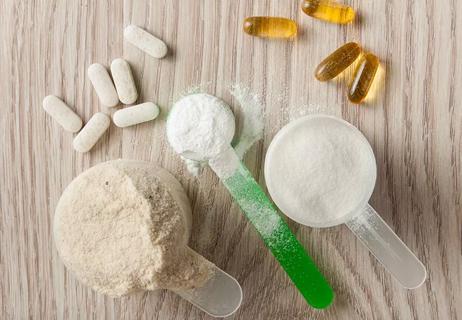There’s no proven way to remove the natural stimulant from your body, but you can counter its effects by staying hydrated and getting in some movement

Caffeine: It can be a blessing when you’re tired and need a pick-me-up to get through your hectic day.
Advertisement
Cleveland Clinic is a non-profit academic medical center. Advertising on our site helps support our mission. We do not endorse non-Cleveland Clinic products or services. Policy
While a cup of coffee, a spot of tea, a can of soda or an energy drink can give you a boost, it’s possible to drink too much caffeine in a day. This can lead to side effects like an increased heart rate, headache and dehydration.
“A cup of coffee is about 80 to 85 milligrams,” says registered dietitian Beth Czerwony, RD, LD. “While 400 milligrams of caffeine a day (about four cups of coffee) is considered to be relatively safe, I tell people not to have more than 200 milligrams in a single sitting.”
But if you have one too many caffeinated drinks in a day, you may wonder how to get caffeine out of your system.
Czerwony explains how long caffeine stays in your body and how to limit or reduce any side effects from drinking too much caffeine.
Caffeine has a half-life (the time it takes to decrease by half) of five hours. That means that after five hours, you should have 50% of the caffeine you originally consumed in your system.
But how long it can actually take depends on a few other factors, says Czerwony, such as your sensitivity to caffeine, the strength of the caffeine, how much you consume and how often.
“There are some people that can clear caffeine out of their system way faster than others,” she shares. “But in some people, it could take up to 10 hours for caffeine to exit your bloodstream.”
Advertisement
If you have too much caffeine in your system, you may feel jittery and shaky. Other side effects may include:
“If you’re not used to having a lot of caffeine and then drink an unusual amount, the caffeine itself can cause some GI issues,” warns Czerwony.
And while rare, it’s possible to experience a caffeine overdose or toxicity from overconsumption. This can lead to serious heart rhythm problems.
“Consuming excessive caffeine can have serious health side effects, including increased heart rate/palpitations, high blood pressure, anxiety and trouble breathing,” she stresses. “More serious side effects include seizure, electrocardiogram changes, cardiac arrest and kidney injury.”
You really can’t speed up how quickly caffeine leaves your system. But you can take some steps to lessen or reduce its side effects. Czerwony explains what you can do.
One of the most important things you can do is stay hydrated by drinking water throughout the day.
“Dehydration is one of the most common side effects of consuming too much caffeine,” says Czerwony. “To make sure you’re staying hydrated follow this rule: Anytime you have any kind of caffeine, follow it up with water. This will help you have fewer symptoms overall.”
If you’re sitting at your work desk while you’re feeling jittery, shaky and anxious, try to move around.
“Go outside, get some fresh air, go for a walk,” suggests Czerwony. “Any type of movement or exercise is going to help regulate your central nervous system. You’ll start to feel some of those symptoms decrease.”
Another trick to help with feeling anxious? Using some deep breathing and other relaxation techniques like meditation and yoga.
“If your mind is racing, these relaxation techniques can intentionally help slow down your thoughts and slow down your breathing,” recommends Czerwony.
One thing you don’t want to do? Quit caffeine “cold turkey” or all at once.
“If you consume caffeine frequently and want to cut back, make sure that you’re decreasing it over time,” emphasizes Czerwony. “Going cold turkey can lead to caffeine withdrawal and symptoms like a headache and irritability.”
Instead, you should slowly wean or reduce your caffeine consumption over time. For example, if you typically drink four cups of coffee a day, start by cutting back by a half-cup each day and slowly decrease the amount you drink.
“Make sure you’re not replacing one form of caffeine with another,” she adds. “Some people who are trying to cut back on coffee may replace it with an energy drink not realizing how much caffeine it has.”
Advertisement
You may want to consider switching to decaf coffee or other drinks that don’t contain caffeine or as much caffeine, too.
“Decaf coffee still has a little bit of caffeine in it — about 2 to 7 milligrams — but it’s going to have far less than a regular cup of coffee or energy drink,” explains Czerwony.
Also, pay attention to what else you’re consuming. Foods like dark chocolate and certain medications like aspirin contain caffeine.
If you’re looking for the fastest way to get caffeine out of your system, you may be disappointed that there aren’t any specific remedies that work.
You may have seen advice that eating foods high in fiber or taking an L-theanine supplement can help reduce the effects of caffeine. But Czerwony says there isn’t any proven research to back up those claims.
“L-theanine and caffeine can be a safe and effective combination for improving cognitive performance, memory and attention,” she clarifies. “There is some speculation that L-theanine can counteract the jitteriness of caffeine, but this may not be true in everyone.”
While you can minimize the effects of caffeine by drinking water, switching to decaf and moving around, again, there’s no proven method on how to flush caffeine out of your system quickly.
Advertisement
“Unfortunately, it takes time to clear caffeine out of your body — nothing’s really going to help speed it up,” Czerwony reiterates. “It’s just going to take time. You just got to wait it out.”
Advertisement
Learn more about our editorial process.
Advertisement

This common stimulant can help you feel more awake, alert and focused, but too much of it can cause side effects

This popular stimulant has various impacts on your brain, heart, digestive system and other body systems

No amount of caffeine is safe for kids under 12, and kids 12 to 17 should be cautious about how much they consume

Don’t make the mistake of stopping cold turkey

These caffeine-packed supplements can give your workouts a boost

Edamame, lentils and chicken breast are good sources of protein

This powerful antioxidant does more than fight colds — it keeps you healthy inside and out

Eating this root vegetable can help support your eye, heart and brain health

The best parenting style balances enforcing rules and showing plenty of love

Tips include cutting back on sugar, focusing on exercise and managing stress

It can be harder to let go when you’ve invested time, energy and emotions — but it might be the healthier choice long term